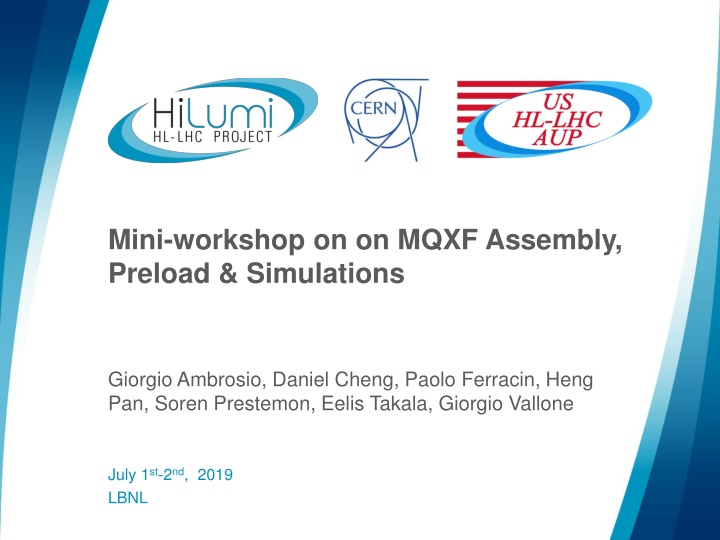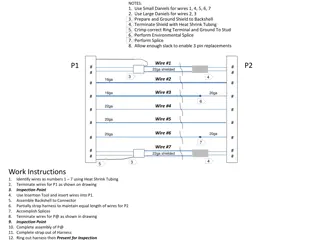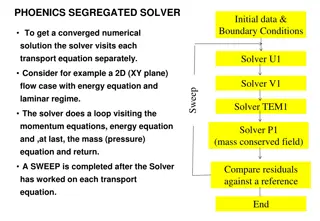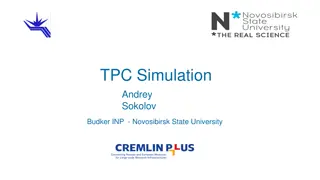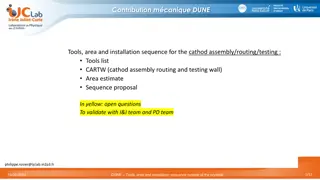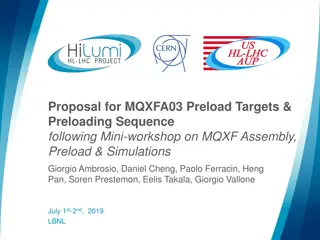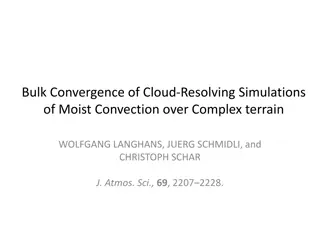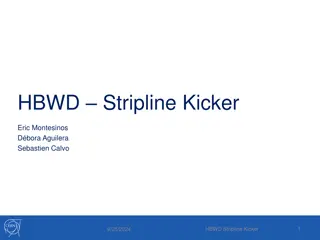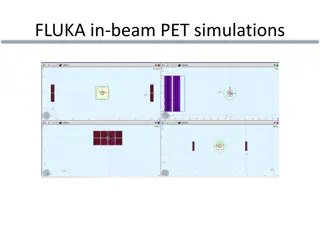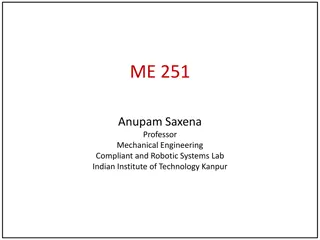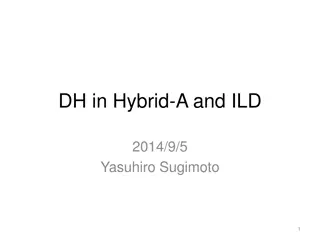Insights on MQXF Assembly Preload and Simulations
Discussion topics for a mini-workshop on MQXF assembly include coil size measurements, shimming techniques, stress levels, and simulations. Plans for MQXFA03, including radial shim adjustments and pole key clearance options, are detailed. Nominal shim plans and key considerations for optimized assembly performance are highlighted.
Download Presentation

Please find below an Image/Link to download the presentation.
The content on the website is provided AS IS for your information and personal use only. It may not be sold, licensed, or shared on other websites without obtaining consent from the author.If you encounter any issues during the download, it is possible that the publisher has removed the file from their server.
You are allowed to download the files provided on this website for personal or commercial use, subject to the condition that they are used lawfully. All files are the property of their respective owners.
The content on the website is provided AS IS for your information and personal use only. It may not be sold, licensed, or shared on other websites without obtaining consent from the author.
E N D
Presentation Transcript
Mini-workshop on on MQXF Assembly, Preload & Simulations Giorgio Ambrosio, Daniel Cheng, Paolo Ferracin, Heng Pan, Soren Prestemon, Eelis Takala, Giorgio Vallone July 1st-2nd, 2019 LBNL logo area
Items to be discussed Coil size measurements Nominal radius vs real radius Faro vs. CMM Coil-pack shimming Mid-plane shims vs radial shims What about variable shims along the length? Historical missing radial shim Pole keys Material Length (end region) Pole key gaps Pre-load at room temperature Stress levels in shell, rods, and coils Optimal levels based on MQXF quench performance? Pre-load sequence Transfer function plots Simulations Properties of coil in FEM 20 GPa linear, 40 GPa linear, or 20-40 GPa not-linear (plastic) Comparison with experimental data during cool-down and excitation Pole to coil glued or separation models Multiple assemblies Do we simulate well multiple assemblies/loading? Should we use different module for first/second assembly? Review of quench performance/locations Segment A3A4 Ends vs straight section Paolo Ferracin 2
Plans for MQXFA03 Radial shim (see next slide for nominal shim plan) As done in previous short models, the plan is to remove 0.125 mm of radial shim with respect to nominal shim plan This has always been done since LQ to improve coil to collar contact based on Fuji paper results Strain gauge data during bolting of collar pack avoid initial tension in pole strain In MQXFS4 an additional layer of kapton was removed, for a total of 0.250 mm of missing radial shim, since the Fuji paper test was not satisfactory and first loading was showing the LQ effect Paolo Ferracin 3
Nominal Shim Plan Impreg. Radius: 113.376 mm Collar Radius: 114 mm Kapton Shims: 125 m GPI, Kapton: 125 m Paolo Ferracin 4
Plans for MQXFA03 Pole key clearance Two options were considered MQXFS1a case Pole key with fiber in the radial direction high thermal contraction and low modulus A pole key gap per side of ~3 mils This value is larger than in MQXFS1a, where the target was zero gap as a results we expect less force intercepted by the pole key than in MQXFS1a MQXFS4 case Pole key with fiber in the azimuthal direction low thermal contraction and high modulus Key machined to have ~8 mils of pole key gap per side These correspond to the same conditions as MQXFS4 The MQXFS4 case is the selected one Paolo Ferracin 5
Plans for MQXFA03 Azimuthal pre-load (see next slide for summary) The target is MQXFS4, with a reduction of 10 MPa to account for possible larger spread due to the longer length Therefore, target pre-stress at cold is: 100 MPa This means pre-stress at warm of about 80 MPa after creep Assume 5-10 MPa of creep We set as maximum coil stress to 110 MPa during loading Paolo Ferracin 6
Plans for MQXFA03 Axial pre-load (see next slide for summary) The target is MQXFS4, with a reduction of 0.2 MN to limit the rod stress at room temperature and meet the design criteria MQXFA has rods with smaller radius than MQXFB (33 vs 31 mm) Therefore, the total force at cold is: 1.0 MN This means that the total force after cool-down (and at room temperature) will be 0.1 MN higher than in MQXFAP1/P2 Paolo Ferracin 8
Plans for MQXFA03 Pre-load sequence The plan is to adopt the MQXFS4 sequence 1. Coil pack centering (13.1-13.2 mm interference keys) 2. Pre-load axial rods with ~50-100 microstrain 3. 50% azimuthal pre-load (0.250 mm added shim) 4. 50% axial pre-load (about 300 micro-strain) 5. 100% azimuthal pre-load 6. 100% axial pre-load FEM computations indicate lower axial strain in the coil pole during pre-load with this sequence with respect to 100% azimuthal then 100% axial pre- load Further investigation with FE model is in progress Paolo Ferracin 10
Action items Extract the pole keys (fiber in the azimuthal directions) from MQXFA03 coils and machine them in order to have ~8 mils of pole key gap on each side In parallel, continue with shell-yoke sub- assembly Once keys are machined, proceed with coil- pack assembly (no Fuji test) Paolo Ferracin 11
Action items FE models 3D Compare pre-load sequences (S4 type and AP1 type) during pre-load, cool-down end excitation Axial strain in the winding pole Contact pressure coil to end-spacers Shear between wedge and coil in the straight section Axial strain in the coil close to the wedge in the straight section Analyze smaller ends effect (ET) Check how the contact between the key and the pole groove Side: contact sliding/separation/friction Bottom: Contact elements sliding/separation/friction Fix (coupled in all directions) one keypoint (z=0, theta=45) All the other nodes at theta=45 are coupled in r Paolo Ferracin 12
Action items Investigating LQ effect (ET) 2D model Coil with changing radius (larger on pole, smaller on the mid-plane) Miss-match between coil radius and collar radius This could either create the LQ effect or compensate it Investigating wedge issue (HP) 3D model Current MQXFA model with all contact sliding/separation with friction and no symmetry boundary condition on the wedge (z=0) Verify that the tip of the wedge is not glued to the spacer Investigate A) axial strain in the coil close to the wedge and check for possible spikes (TQ type) B) The possible gaps between wedge and spacer and at z=0 Explore then the impact on A and B of the loading sequence Axial loading level If the analysis indicates a potential issue with A, investigate the effect of reducing the length of the wedge segments Either by cutting the wedge volume or by killing elements Paolo Ferracin 13
Action items Investigation of effect of modulus and of loading-reloading As output, check the coil peak stress in the following cases 2D model: 1 octant (ET) Full history with 20/40 GPa Simple Thermal cycle Increase of pre-load S1a S1b 2D model: 4 quadrants (HP) 3 coils with 40 Gpa and 1 coil with 20 GPa Compare bladder operation 2 quadrant vs 1 quadrant For a normal virgin loading, we stay with the 20 GPa modulus bonded (baseline). This will allow to compare to previous magnets Run the baseline loading conditions of MQXFA03 (3D model) (HP) Paolo Ferracin 14
